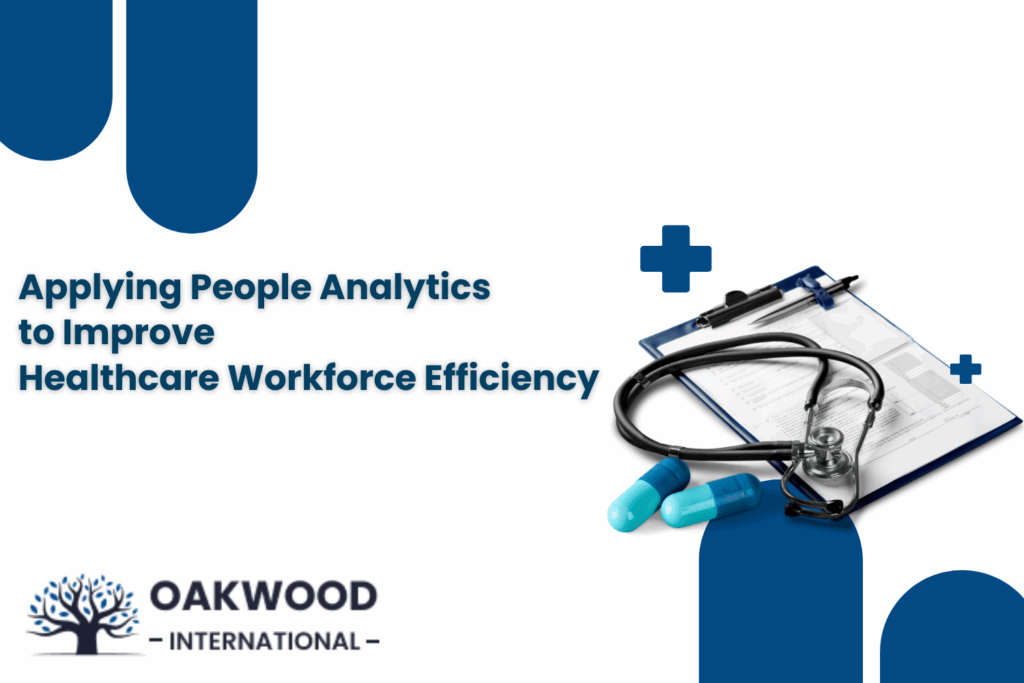Healthcare teams are under more pressure than ever and leading them effectively means mastering more than just clinical coordination. That’s where the CIPD Level 5 Associate Diploma in People Management steps in. This qualification builds essential skills in employee engagement, organisational behaviour, and evidence-based decision-making all critical for managing modern healthcare environments.
Among the most powerful tools covered in this qualification is People Analytics. Let’s take a closer look at how People Analytics is transforming how healthcare professionals manage their workforce.
Table of Contents
- How People Analytics Drives Real Change in Healthcare
- Conclusion
How People Analytics Drives Real Change in Healthcare
Below are practical and proven ways People Analytics is transforming workforce efficiency in the healthcare sector:
Making Sense of Healthcare Data Without the Headache
In hospitals and clinics, thousands of data points are generated daily, shifts, absences, patient loads, overtime, and more. People Analytics in healthcare help turn this chaos into clarity. Instead of relying on guesswork, managers can use real-time data to make well-informed decisions about staffing, resource allocation, and team performance.
For example, hospitals can reduce unnecessary overtime and create balanced rotas by analysing absence patterns and shift preferences. This improves patient care and keeps healthcare workers more satisfied and less fatigued.
From Gut Feelings to Evidence-based Decisions
Traditional healthcare management often relies on instinct or experience. But gut feelings can fall short in high-pressure environments. People Analytics tools offer evidence instead of intuition. Want to know which departments are most at risk of burnout? Or which teams are consistently short-staffed? The answers lie in the data.
HR professionals and leaders can quickly identify trends using dashboards and visual tools. It also supports fairer decisions by removing bias and bringing transparency to promotions, training, and performance reviews.
Smarter Scheduling That Works
Rotas can make or break staff morale in healthcare. Poor scheduling leads to overworked nurses and under-resourced departments. With workforce analytics, rota planning becomes smarter. It considers availability, skill sets, team dynamics, and past performance.
This ensures the right people are in the right place at the right time. It also helps reduce absenteeism by matching staff to roles and shifts in which they’re more likely to engage. When staff feel heard and valued, they stay longer.
Predicting and Preventing Burnout
Burnout is one of the biggest challenges in healthcare. Long hours, emotional strain, and heavy workloads take their toll. But what if you could predict who’s likely to burn out and take action before it happens?
That’s where predictive People Analytics shines. Managers can spot warning signs early by tracking indicators like excessive overtime, patient load, and engagement survey results. This allows for timely support, workload adjustments, or even just a supportive check-in. The result? A more resilient and motivated workforce.
Enhancing Recruitment and Retention
Hiring in healthcare is more than filling vacancies, finding the right fit. HR analytics improve recruitment by identifying what makes a successful hire based on real data.
It helps HR teams build profiles of top performers, assess skill gaps, and make better hiring decisions. On the retention side, People Analytics reveals why people leave and, more importantly, what keeps them staying. That insight is invaluable in a sector where continuity is key.
Training That Targets Real Needs
Every team has its strengths and blind spots. Without data, it’s hard to know where to focus training. People Analytics in HR pinpoints areas lacking skills, making training efforts more relevant and cost-effective.
Hospitals can tailor learning to individual needs rather than sending everyone on the same course. This improves care quality and boosts staff confidence and motivation. It’s about developing people where it matters most.
Building a Culture of Continuous Improvement
One of the biggest strengths of People Analytics is that it’s ongoing. It supports a culture of learning, agility, and improvement. Healthcare organisations that use it effectively always adjust, learn from data and fine-tune their workforce strategies.
This adaptability is vital in fast-moving environments where needs can change overnight. With People Analytics, healthcare teams are better prepared to lead with clarity and confidence.
Conclusion
People Analytics is no longer a luxury, it’s a necessity in modern healthcare. From smarter scheduling to burnout prevention, it helps leaders make decisions that improve lives. To elevate your people strategy and improve care quality, consider exploring resources from Oakwood International. Their expertise can help you build stronger, data-informed teams that thrive.



